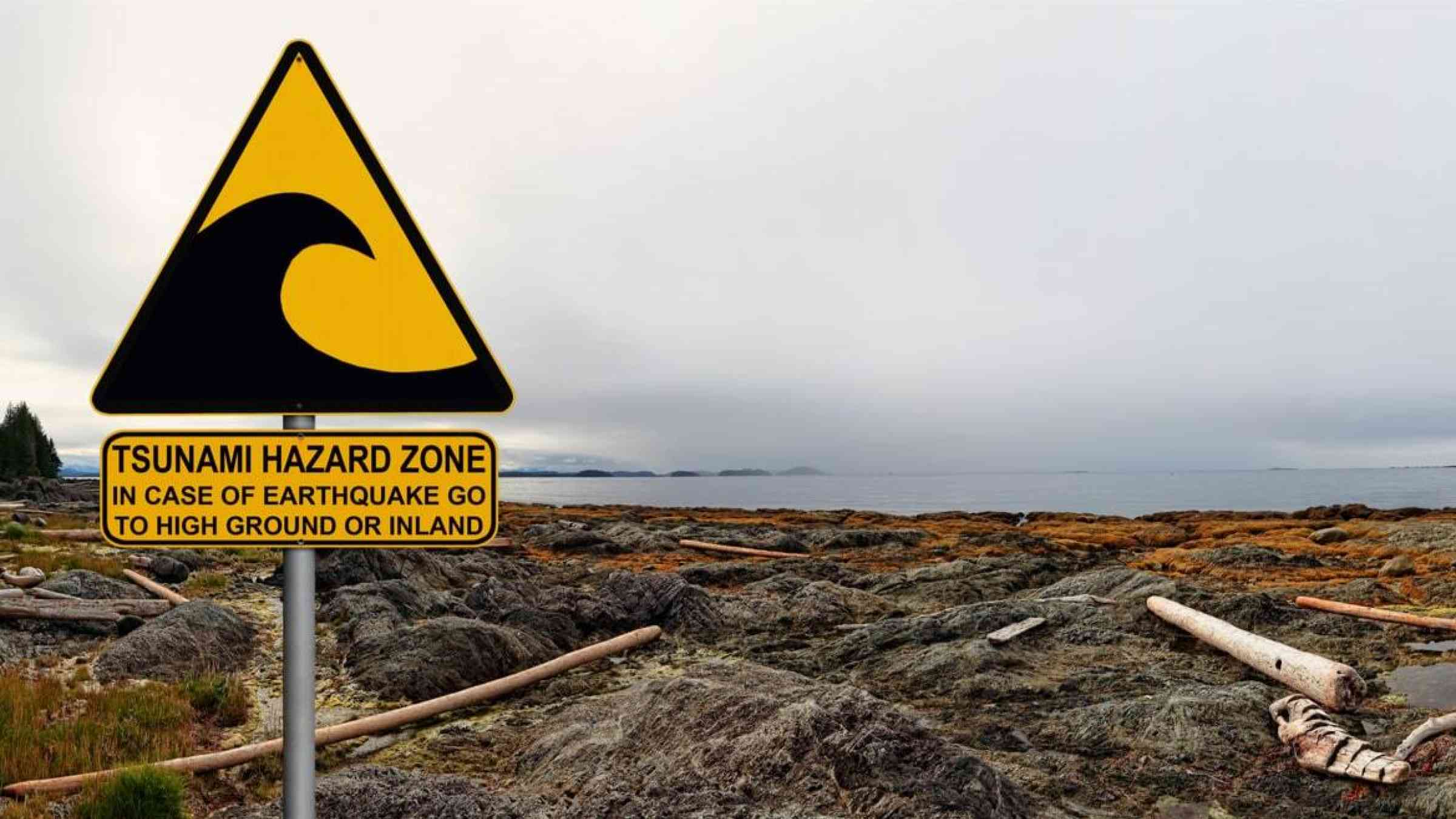An earlier tsunami warning could save lives. New data say it’s possible

Early signals of a coming tsunami hide in Earth’s magnetic field, according to new research.
In 2009, two earthquakes struck off the shore of American Samoa, Samoa and Tonga, triggering a 72-foot (22-meter) tsunami. Sixteen minutes later, an official warning was issued, but by then, it was too late. In some places the wave had arrived just one minute earlier, swallowing coastal villages and killing 192 people in the process.
Maybe one more minute of warning could have saved more lives, says Zhiheng Lin, a geophysicist at Kyoto University.
Currently, tsunami early warning systems use strategically-placed ocean buoys to detect these dangerous waves, which send their data to scientists at the closest Tsunami Warning Center for verification, forecasting and alerting. It’s a system that has been in place since the 1950s, but it’s also by no means perfect. And compared to the speed at which a tsunami travels (up to 500 miles, or 800 kilometers, per hour), this system can feel excruciatingly slow, or could be deadly — like in 2009.
To speed up the tsunami warning process, some researchers have turned their attention to tsunami-generated magnetic fields that, based on model simulations, could forecast the waves faster than the existing buoys. “The magnetic field is generated like a circle around the [wave],” explains Lin, “so we can detect it earlier.”
Unfortunately, until now, a lack of data has prevented this hypothesis from being fully tested. But, in a new study, Lin and colleagues used a rare set of measurements obtained from two previous tsunamis — including the 2009 incident — to showcase the viability of this method.
Magnetometers in the ocean
Every time the ocean moves, it creates an electric current. These currents, in turn, generate small, yet detectable, magnetic fields. Researchers have previously likened the tsunami magnetic fields to the first, sometimes subtle seismic waves that precede the worst shaking from an earthquake. Similar to how scientists use these seismic waves to learn more about quakes, “the idea here is that you can use [magnetic fields] to start learning about the tsunami,” explains Neesha Schnepf, a research scientist at the Laboratory for Atmospheric and Space Physics at the University of Colorado Boulder, who was not involved in the study.
Unfortunately, regular measurements of tsunami magnetic fields are not yet the norm. In fact, only one observatory is currently capable of collecting this type of data. Most of the time, researchers must depend on data from temporary observatories that are only set up for a few months to conduct geophysical surveys. “You wind up being able to use those data for a tsunami only if a tsunami happens during that time,” says Schnepf.
As it so happened, two tsunamis — the 2009 Samoa event and one generated after the 2010 Maule earthquake — occurred during the TIARES campaign, an unrelated scientific study that deployed ocean-bottom electromagnetometers to assess the mantle structure below the French Polynesian seafloor. Sea level data was also collected during both tsunamis via differential pressure gauges that were included in the TIARES instrument package. Both geomagnetic and sea level data are needed to confirm that magnetic fields can truly be used to forecast tsunamis. “The data used in our study is the only simultaneous sea floor data of the tsunami magnetic field and the tsunami sea level change,” says Lin.
Toward a better tsunami warning system
In the end, Lin found that “the tsunami magnetic field [arrived] earlier than the tsunami sea level change by one minute,” adding that the fields can also be used to estimate the wave’s height before it strikes. “This means that we not only can know that the tsunami presents earlier, [but] it also can lead us to estimate how large the tsunami [will be],” he explains.
If added to existing models, Schnepf says that this type of data could help reveal the dynamics that caused the tsunami in the first place. “Not every oceanic earthquake causes a tsunami,” they explain, “so it would help with that prediction.” In addition, it can also work the other direction, as Lin’s study showed, predicting both where the tsunami is going, and to what extent the sea level could change as a result.
With this in mind, Schnepf says that a dream scenario would be to have several magnetometers set up across each ocean basin, collecting data that would, at the very least, complement measurements provided by the existing buoys. But “to have [a permanent] observatory that’s the necessary data quality for a tsunami would take significant effort,” they explain.
Even so, they still think it’s still feasible. And Lin’s study suggests that such a network would only benefit the existing tsunami early warning system.
“Because the tsunami’s magnetic field can be detected earlier than [its] sea level change, I think it will make a better tsunami early warning [system] and it will save more lives,” says Lin.
References
Lin, Z., Toh, H., & Minami, T. (2021). Direct comparison of the tsunami-generated magnetic field with sea level change for the 2009 Samoa and 2010 Chile tsunamis. Journal of Geophysical Research: Solid Earth, 126. https://doi.org/10.1029/2021JB022760
Further Reading
Minami, T., Schnepf, N.R. & Toh, H. (2021). Tsunami-generated magnetic fields have primary and secondary arrivals like seismic waves. Scientific Reports, 11, 2287. https://doi.org/10.1038/s41598-021-81820-5